Read more about
Beijing Beijing.North China Plain
The heartland of North China is the North China Plain, or the Yellow River Plain.
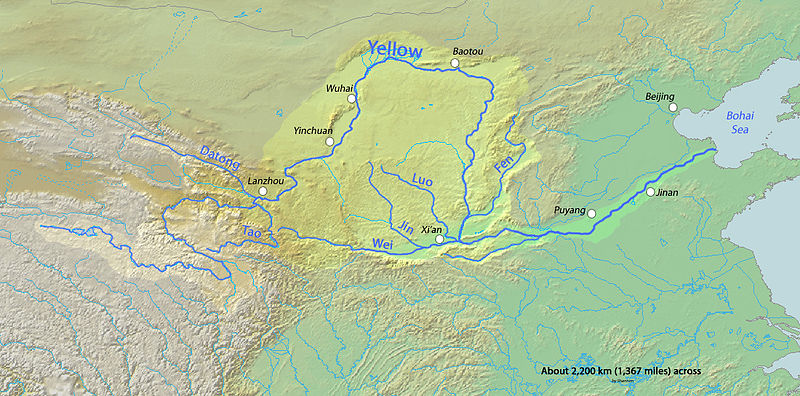 The vast region in
China in the Yellow River Valley and north to the Yangtze River was the centre of Chinese empires, and home to Confucian civilization. In prehistory and early history, the plain
(Henan in particular) is considered the origin of Chinese civilization in official Chinese history. The region cultivated wheat, and most speak Mandarin as their dialects, a language that today being established as the official language of the People's Republic of
China. The region remains the political, military, and cultural center of the PRC to this day.
The vast region in
China in the Yellow River Valley and north to the Yangtze River was the centre of Chinese empires, and home to Confucian civilization. In prehistory and early history, the plain
(Henan in particular) is considered the origin of Chinese civilization in official Chinese history. The region cultivated wheat, and most speak Mandarin as their dialects, a language that today being established as the official language of the People's Republic of
China. The region remains the political, military, and cultural center of the PRC to this day.
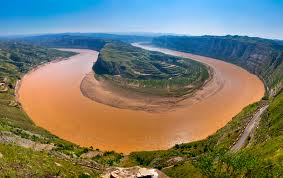 The North China Plain is based on the deposits of the Yellow River and is the largest alluvial plain of eastern Asia. The plain is bordered on the north by the Yanshan Mountains and on the west by the Taihang Mountains edge of the
Shanxi (´western mountains´) plateau. To the south, it merges into the Yangtze Plain. From northeast to southeast, it fronts the Bohai Sea, the highlands of
Shandong Peninsula, and the Yellow Sea. The Yellow River flows through the middle of the plain into Bohai Sea.
The North China Plain is based on the deposits of the Yellow River and is the largest alluvial plain of eastern Asia. The plain is bordered on the north by the Yanshan Mountains and on the west by the Taihang Mountains edge of the
Shanxi (´western mountains´) plateau. To the south, it merges into the Yangtze Plain. From northeast to southeast, it fronts the Bohai Sea, the highlands of
Shandong Peninsula, and the Yellow Sea. The Yellow River flows through the middle of the plain into Bohai Sea.
Below the Sanmenxia Dam is the multipurpose Xiaolangdi Dam, located in the river´s last valley before the North China Plain, a great delta created from silt dropped at the Huang He´s mouth over the millennia. The North China Plain extends over much of
Henan,
Hebei, and
Shandong provinces. and merges with the Yangtze delta in northern Jiangsu and Anhui provinces.
The Yellow River meanders over the fertile, densely populated plain emptying into the Bohai Sea. The plain is one of China´s most important agricultural regions, producing corn, sorghum, winter wheat, vegetables, and cotton. Its nickname is "Land of the yellow earth."
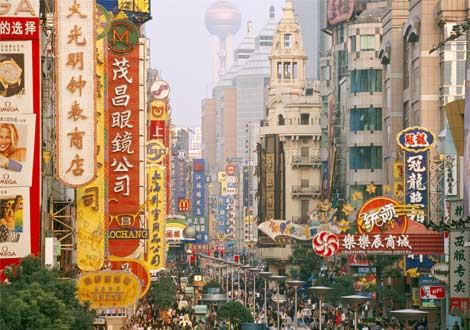 |
| Wangfujing Street is one of the busiest streets in Beijing, with nearly 100,000 visitors daily (August 2008). |
The southern part of the plain is traditionally referred to as the Central Plain, which formed the cradle of Chinese civilization.
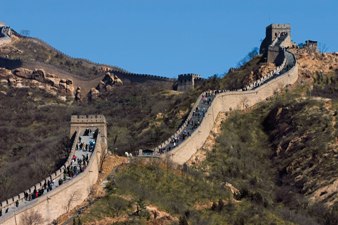 The plain covers an area of about 409,500 square kilometers (158,100 sq mi), most of which is less than 50 metres (160 ft) above sea level. This flat yellow-soil plain is the main area of sorghum, millet, maize, and cotton production in
China. Wheat, sesame seed, and peanuts are also grown here. The plain is one of the most densely populated regions in the world.
The plain covers an area of about 409,500 square kilometers (158,100 sq mi), most of which is less than 50 metres (160 ft) above sea level. This flat yellow-soil plain is the main area of sorghum, millet, maize, and cotton production in
China. Wheat, sesame seed, and peanuts are also grown here. The plain is one of the most densely populated regions in the world.
Beijing, the national capital, is located on the northeast edge of the plain, with
Tianjin, an important industrial city and commercial port, near its northeast coast. Shengli Oilfield in Shandong is an important petroleum base. It is also home to the Yellow River.
Beijing, sometimes romanized as
Peking, is the capital of the People´s Republic of China and one of the most populous cities in the world. The population as of 2013 was
21,150,000. The metropolis, located in northern China, is governed as a direct-controlled municipality under the national government, with 14 urban and suburban districts and two rural
counties.Beijing Municipality is surrounded by Hebei Province with the exception of neighboring
Tianjin Municipality to the southeast.
As a dual-core city, Tianjin is divided into the old city and the Binhai New Area. Binhai New Area is a new growth pole in China, and it maintains an annual growth rate of nearly 30% of the GDP. As of the end of 2010, 285 Fortune Global 500 companies have established branch offices in Binhai. It is a base of
China´s advanced industry, financial reform, and innovation.
| Region |
Area |
Population |
Density |
|
| Henan |
167,000 km2 |
94,923,567 |
560/km2 |
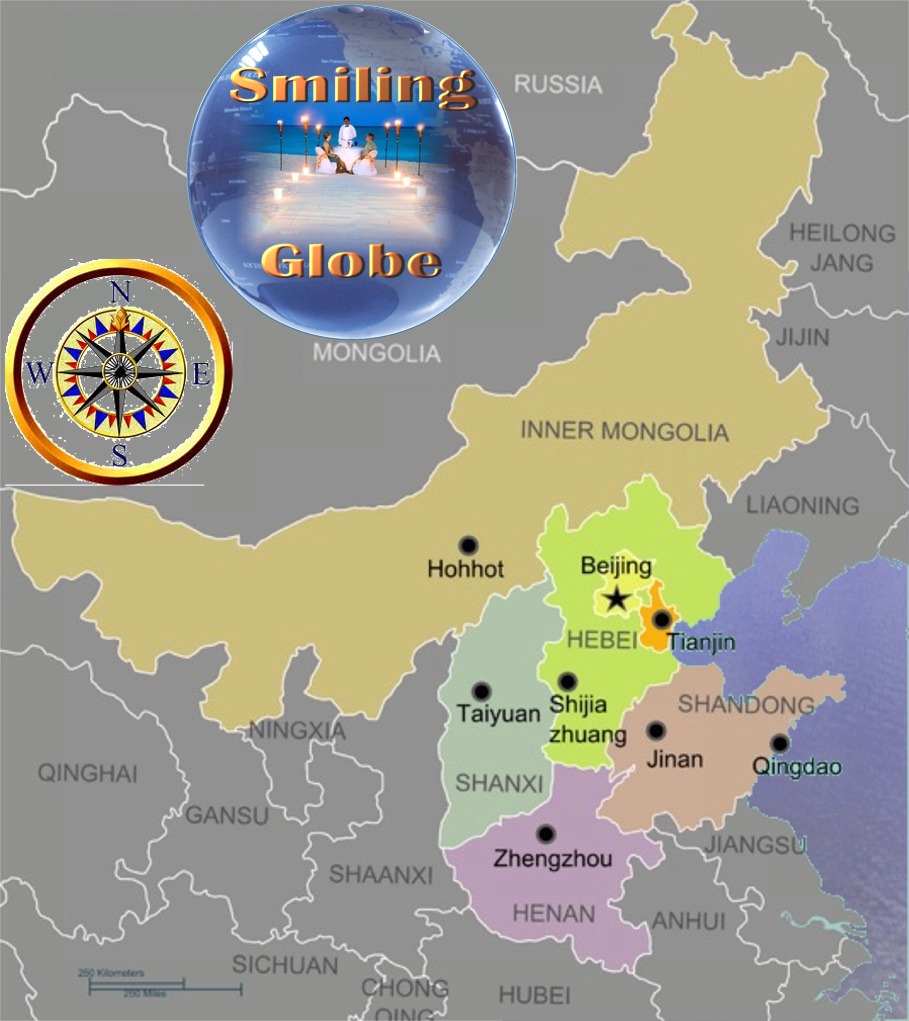
|
Cities: Zhengzhou is the capital of
Henan
Province. Sometimes it is called the Green City, for the number of trees it has, or rather had.
|
| Shanxi |
156,000 km2 |
35,712,111 |
230/km² |
Cities: Taiyuan is the capital of the Shanxi Province
(Yellow River, mountains, ancient cities and /Provence areas)
|
| Shandong |
157,100 km2 |
96,880,000 |
620/km² |
Cities: Jinan, is the capital city of Shandong since Ming dynasty, renowned for its 72 Famous Springs.
|
| Hebei |
187,700 km2 |
71,954,202 |
330/km² |
Cities: Shijiazhuang , is the capital and largest city of North China´s Hebei province..
|
| Inner Mongolia |
1,183,000 km2 |
24,706,321 |
20/km² |
Cities: Hohhot,
has been the capital of Inner Mongolia since 1947 beijing-china.jpg
|
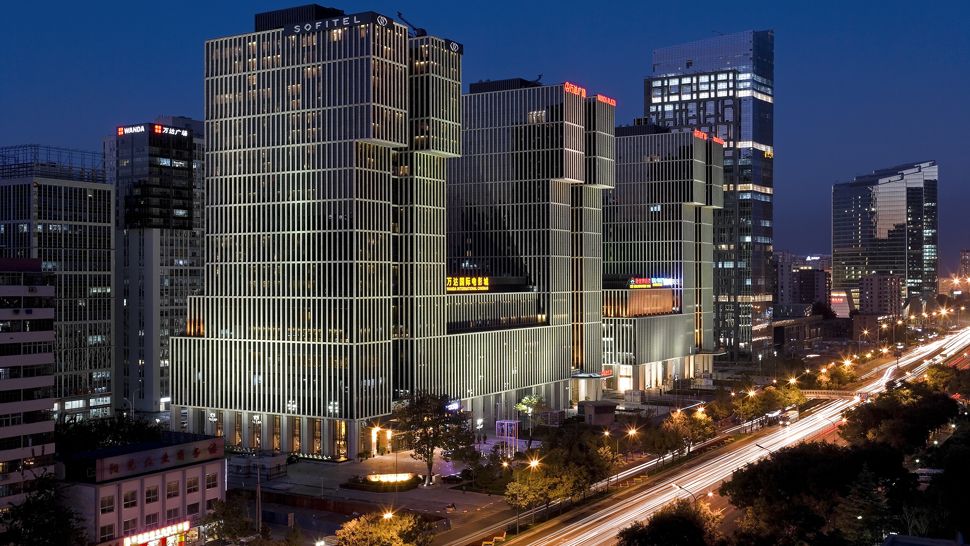 |
| Tianjin |
11,760 km2 |
14,131,500 |
1.220/km² |
Cities: Tianjin
,
is divided into the old city and the Binhai New Area. Binhai New Area is a new growth pole in China, and it maintains an annual growth rate of nearly 30% of the GDP.
|
| Beijing |
11,760 km2 |
14,131,500 |
1.220/km² |
Cities: Beijing,
has been the political center of the country for much of the past eight centuries
|
Henan Province (Birthplace of the nation and ancient home to more than 200 emperors from more than 20 dynasties)
Henan , Yu for short, is a province located in the Northern Central Region of
China. It shares its borders with six other provinces, Shandong to the northeast, Hebei to the north, Shanxi to the northwest, Shaanxi to the west, Hubei to the south, and Anhui to the east. The eastern portion is flat and part of the North China Plain, one of the most densely populated areas on Earth. Indeed
Henan is the most populous province in
China, with almost 100 million people. The mountainous west and southwest is more remote with vast expanses of forest.
The Yellow River (mother river of the Chinese nation) runs through Henan.
Shanxi Province (Yellow River, mountains, ancient cities and /Provence areas). The name Shanxi means "mountain's west", which refers to the
province´s location west of the Taihang Mountains. Shanxi borders Hebei to the east, Henan to the south, Shaanxi to the west, and Inner Mongolia to the north and is made up mainly of a plateau bounded partly by mountain ranges. The capital of the province is Taiyuan.
Hebei is a province of the People's Republic of China in the North China region. The name Hebei means "north of the river", referring to its location entirely to the north of the Yellow River. Shijiazhuang is the capital and largest city of North China´s Hebei province.
Inner Mongolia is a Mongol Autonomous Region in northern China, where as Outer Mongolia is a separate country to the north of China. The region covers most of the northern edge of china, curving in a banana shape. To the north is the Republic of Mongolia and the north east tip of Inner Mongolia borders with Russia. The other borders of the region are with other Chinese provinces, going clock wise form the north east they are Heilongjiang, Jilin, Liaoning, Hebei, Shanxi, Shaanxi, Ningxia Hui Autonomous Region, and Gansu. Although Hohhot has only been the capital of Inner
Mongolia since 1947, it has taken on the role with ease and with a rapidly growing population (currently at around 1.6 million) it has begun to challenge Baotou as the region´s industrial and economic powerhouse.
Tianjin is a metropolis in northern China and one of the five national central cities of the People´s Republic of China. It is governed as a direct-controlled municipality, one of four such designations, and is, thus, under direct administration of the central government. Tianjin borders Hebei Province and Beijing Municipality, bounded to the east by the Bohai Gulf portion of the Yellow Sea.
As a dual-core city, Tianjin is divided into the old city and the Binhai New Area. Binhai New Area is a new growth pole in China, and it maintains an annual growth rate of nearly 30% of the GDP. As of the end of 2010, 285 Fortune Global 500 companies have established branch offices in Binhai. It is a base of
China's advanced industry, financial reform, and innovation.
See ratings  af North China , Do you have rice or praise for this Bed and Breakfast, Write your review
af North China , Do you have rice or praise for this Bed and Breakfast, Write your review 